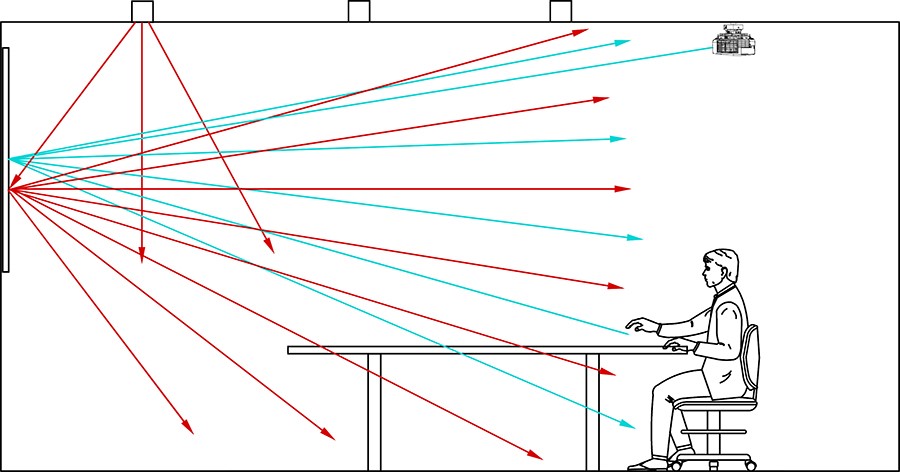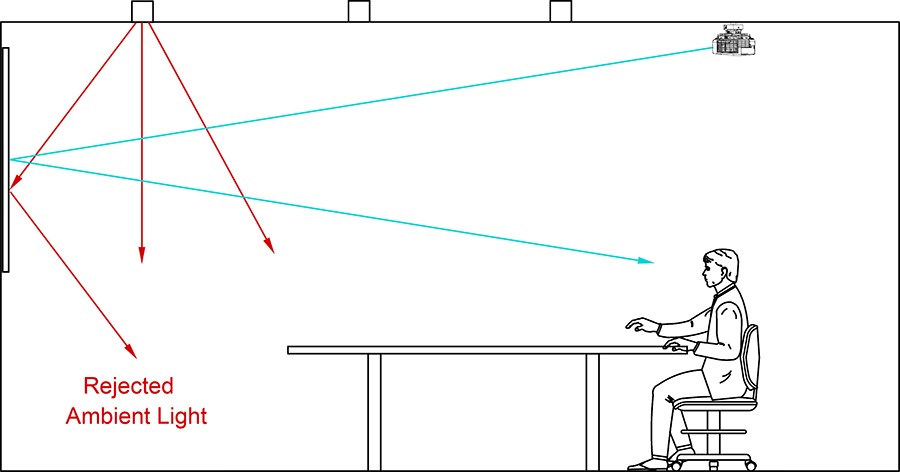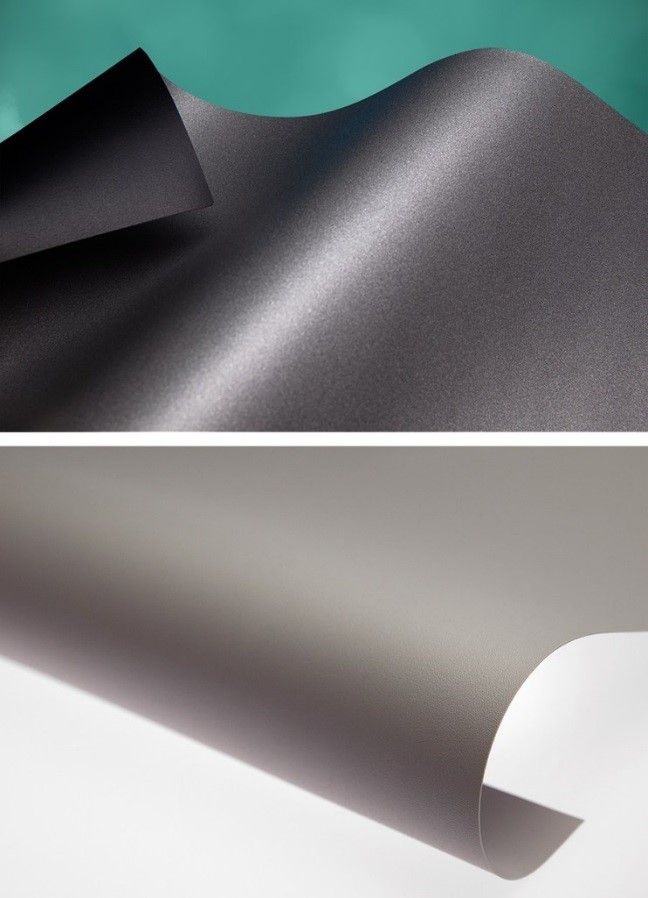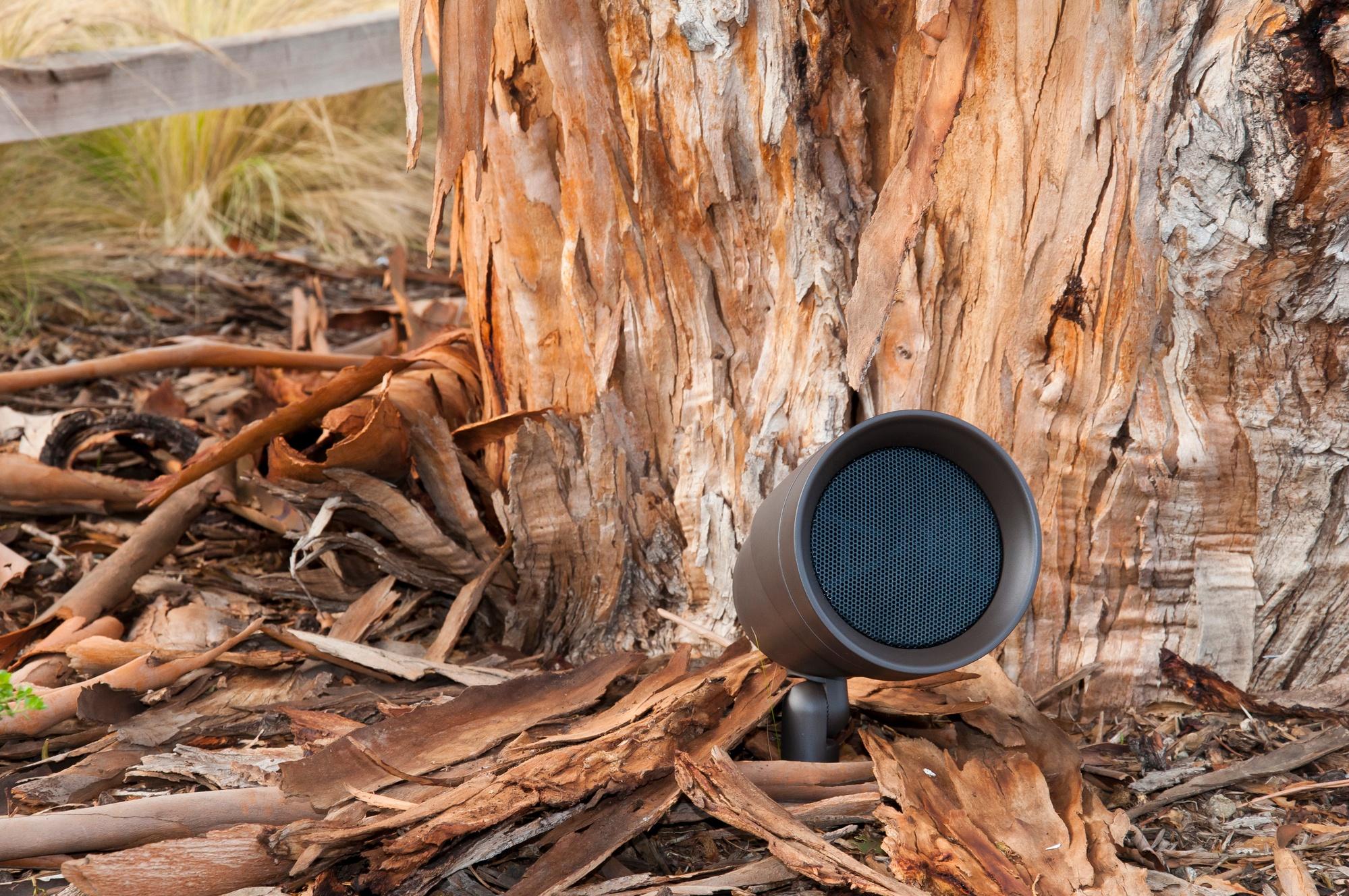How Ambient Light Rejection Works
Ambient light rejection (ALR) projection screen technology has been around for a while now. Despite this, there is still confusion about how ALR works. Some of this confusion is caused by manufacturers making inaccurate claims or promoting non-ALR surfaces as a solution.
Every screen reflects light in two ways: through diffuse reflection and specular reflection.

Diffuse reflection.
Diffuse reflection is when light hits a surface and is reflected at many angles. Most of the light is actually reflected by “scattering centers” just beneath the surface. Because all light is treated equally and reflected at all angles, diffusive surfaces do not make good ambient light rejecting screens.
The color of the viewing surface also plays a role in diffuse reflection. Material color affects the color of the light reflected, or how much white light is reflected. For example, a surface with red tints will reflect light with more red. A pure white screen will reflect as much light as possible of all colors and does not absorb any light. A grey screen will absorb some of the reflected light. The darker the grey, the more reflected light will be absorbed by the material.
White screen surfaces are not perfect diffusers. Some light is not fully diffused, depending on how smooth or rough the surface is or what components are used in a film formulation if it is a formulated surface. A surface that is too smooth can have an elevated level of gloss and cause hot spotting. A surface that is too rough can interfere with the image resolution.

Specular reflection.
Specular reflection is when light hits a surface and is reflected away at a single, opposite angle. ALR screen surfaces use specular reflection to keep non-projector light from reflecting to viewers. Most do this by using a combination of things. They use specular reflective elements in the screen formulation. These elements reflect off-axis ambient light away from viewers. The amount of specular reflection is a key indicator of the amount of ALR performance in a surface. ALR surfaces also use a dark grey color to absorb stray ambient light and improve the contrast.
There can be trade-offs. The more specular reflective a surface is, the narrower the optimal viewing cone will typically be. However, the more specular reflective elements that are added also help increase the gain of the surface, which might otherwise be low due to the dark grey color.

A grey tint doesn’t make it ALR.
Most grey screens have a light or moderate grey tint but are still mostly diffuse reflective surfaces. Again, the color aids in the diffuse reflection. The grey tint only helps to absorb some stray ambient light and improve contrast a little in moderate ambient light conditions. But that does not make it an ALR screen surface. Most ALR surfaces are a much darker grey than a regular grey surface.
More than a number.
There are two ways ambient light rejection is typically communicated: by reporting how much ambient light gets through or how much is rejected. Draper uses the amount of ambient light being rejected to communicate ALR performance.
However, choosing the right ALR solution is about more than just a number. Achieving a good level of ALR requires a balancing act. Surface color, smoothness, gloss, and gain also impact the viewing experience. As material characteristics are adjusted to reject more ambient light, other performance specifications, such as viewing angle and image resolution, will be affected.
Read more here.
When you subscribe to the blog, we will send you an e-mail when there are new updates on the site so you wouldn't miss them.



